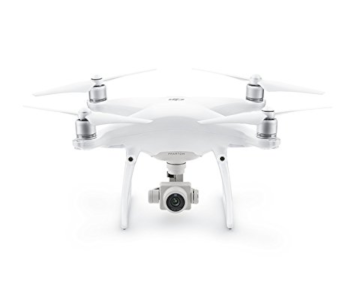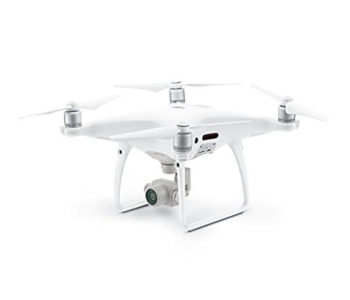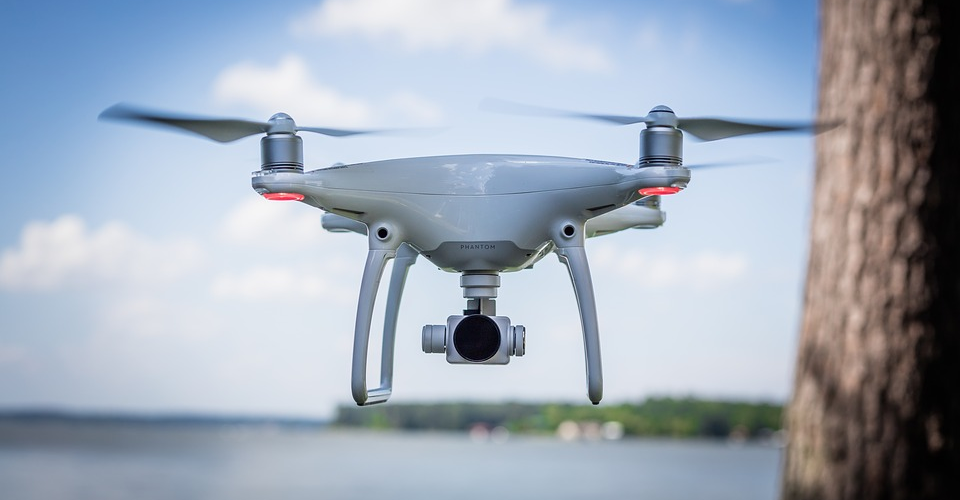DJI Phantom 4 Series Pros and Cons
The DJI Phantom 4 is the 4th generation product line of the Phantom series. DJI is a market leader in commercial drones and the Phantom series is one of DJI’s most popular product lines. The latest Phantom 4 models have signature DJI technologies such as Lightbridge, 4K video capability, and an advanced Obstacle Sensing System.
All drones in the Phantom series are designed for cinematography and photography projects. However, the Phantom series has always been positioned as a consumer drone series. Both recreational users, as well as semi-professional users, have used the Phantom series drones for their applications. The Phantom 4 series is considered to be a consumer drone with professional-grade photo and video capability.
Pros
Sensor size
The Phantom 3 series comes with a camera sensor size of 1/2.3″ CMOS. However, with the Phantom 4 series, all the models except the Phantom 4 come with a camera sensor size of 1″ CMOS. The larger the sensor size, the better the quality of pictures and video.
Higher video quality

All Phantom 4 series cameras are capable of 4K video. The Phantom 4 can do 30 frames per second while all subsequent models are capable of 60 frames per second. If you want to throw a slow-motion video in your vlog or presentation, then 60 frames per second will make the video appear pretty smooth.
The bit rate of the majority of the Phantom 4 series drones is 100 Mbps. Only The Phantom 4 base model has a bitrate of 60 Mbps. A higher bit rate means a better quality of video. To put things into perspective, Blu-Ray has a bit rate of 25 Mbps. So, we are talking 4 times the quality of Blu-Ray. The cameras on the Phantom 4 are definitely in the professional-grade level.
Good operating range
The Phantom 4 has a 2.4 GHz frequency, which is on par with other models of the Phantom 3 series. However, some advanced models of the Phantom 4 series also have a 5.8 GHz frequency band, which gives it a longer operating range.
Better navigation accuracy
The GPS system in the Phantom 4 series drones uses both the American GPS and the Russian GLONASS satellites. Using a combination of these two navigation systems makes the navigation quite robust and accurate. The overall mapping of the drone location is more accurate.
Upgraded obstacle sensors
All the Phantom 4 drones have at least a front and bottom sensor. The previous 3rd generation Phantom drones only have a bottom sensor. The presence of front sensors allows the drone to see far out in distance and avoid obstacles, hover around them, and even enable auto brake.
The Phantom 4 Pro even has side infrared sensors that give the drone a 4-direction obstacle avoidance capability. Such capability is great for complex projects and tight maneuvering.
Improved communication system
Previous generation Phantom drones used Wi-Fi for handling communication between the remote controller/mobile device and the drone body. The base models of the Phantom 4 series uses a much more powerful Lightbridge 2 communication system. Lightbridge boosts operating range to 7 km (FCC countries). The master and slave architecture of the Lightbridge 2 system separates the drone controls and camera plus gimbal controls into two separate links, which allows for better controlling.
The professional model of the Phantom 4 series goes a step further with the use of the OcuSync communication system. OcuSync allows multiple controllers and even DJI Goggles to be connected with the drone body simultaneously.
Smart return-to-home
The forward and downward facing vision sensors allow the Phantom 4 drones to create and map out their flight route in real time. This is the basis of the return-to-home function of the Phantom 4 series, which allows the drone to return back to the user using the same flight route that the drone mapped out in its memory. While returning, it will watch out for obstacles and avoid them as well. It truly is a “smart” system.
Flight time
All the Phantom 4 drones except the base model have a maximum flight time of 30 minutes, which is a reasonable increase from 23 and 25 minutes offered by the Phantom 3 series. The Phantom 4 base model has a maximum flight time of 28 minutes. The Mavic 2 and the Mavic 2 Pro have 30 minute flight times as well. So, the maximum speed of the Phantom 4 series is comparable to the speeds of relatively more expensive drones that DJI has.
Speed
The Phantom 4 series drones can hit a maximum speed of 45 miles per hour or 72 kilometers per hour. That is a decent improvement on the 35 mph limit for the Phantom 3 series. 45 mph is enough speed for semi-professional or even basic professional projects like action shots as well as following moving people and moving cars.
Cons
Bulky design
The Phantom 4 series drones cannot be folded and made compact as the Mavic drones can. You also need to mount and un-mount the propellers before and after each flying session respectively. That just adds to the overall set-up and start-up time. Carrying the Phantom 4 series drones is also not easy if you like to travel light.
Battery life

A flight time of 30 minutes is not bad, but it still is not a lot either. If you want to do some kind of serious videography/photography project, then 30 minutes will fly by without you noticing. For such projects, you probably will require backup batteries that you can swap when one battery runs out. An extra battery pack will cost you $169. That simply adds to the budget which you need to set for your drone purchase. Besides, getting the drone to return and swapping out batteries eats up valuable time.
Gimbal
Users have complained that the gimbal tends to make a screeching sound when the Phantom turns on and off. Also, there is no gimbal protection either. Buying a separate gimbal protection module can be quite expensive.
No built-in display with the remote control
In spite of paying close to $1500, the remote control that comes bundled with the drone does not have a built-in display. You have to rely on your mobile device to view the camera feed or change the settings. Some of the Mavic models have a built-in display.
Conclusion
There are a lot of strong value propositions that the Phantom 4 series offers. It is a semi-professional drone in a sense. The price is a little bit expensive, running north of $1000 and sometimes touching $1800. But, what you get in return is high-quality video and imaging capability and a well-rounded flying experience. There are plenty of safety features which ensure that your drone operates in open spaces and obstacle-filled environments without any problems.
Where this drone lacks is its bulkiness, its short battery life, and decent gimbal quality. If you are looking for decent performance and navigational capabilities and do not mind the fact that the Phantom 4 drones cannot be folded, then these drones are well worth the price. If you prefer a good quality drone that is also compact, then the slightly more expensive Mavic series may be a better option.

